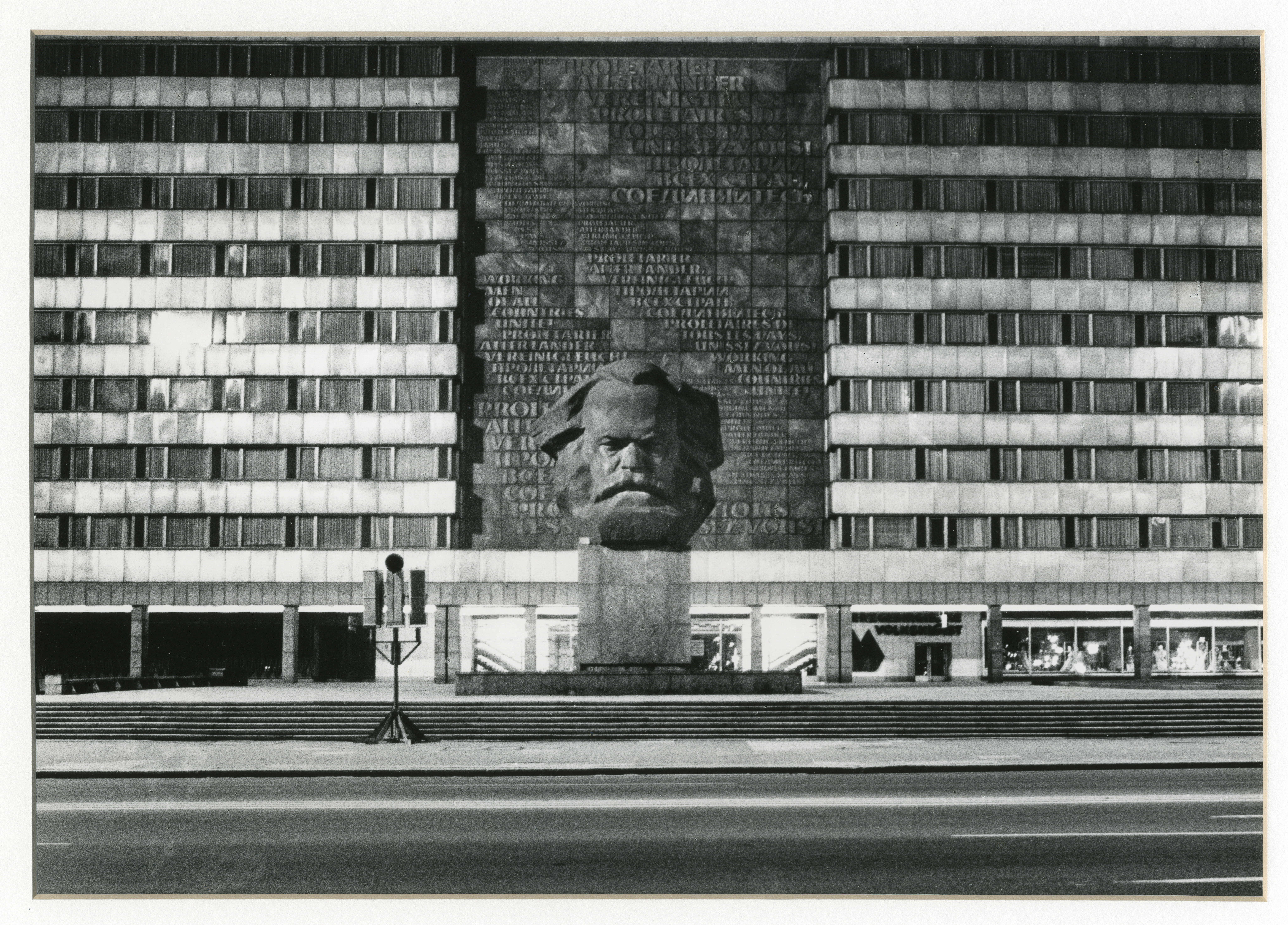
Scenes from behind the wall: Images of East Germany, 1989/90, C0235, Box 2, Item 11, Special Collections Research Center, George Mason University Libraries.
November 9th marked the 29th anniversary to the beginning of the fall of the Berlin stop. On November 8th a press conference from the East German communist party spokesman Guenter Schabowski suggested that the gates of the Berlin Wall would be open. Speculation swarmed throughout the press room and the international media about whether this new policy was true. By 10pm that night the world would hear the final news from West German media, “This ninth of November is a historic day. East Germany has announced that, starting immediately, its borders are open to everyone.”

Scenes from behind the wall: Images of East Germany, 1989/90, C0235, Box 2, Item 10, Special Collections Research Center, George Mason University Libraries.
By midnight the gates were flooded with those of both West and East Berlin who demanded to be let through, the Berlin Wall was officially open. Over the next months, through a combination of civilian and governmental efforts the wall would finally be torn down. The international world finally had access to the secretive world that was East Germany. Two of those people were Page Chichester and Helmut Brinkmann, both of whom were photographers living in West Germany at the time. What would result from the fall of the Berlin Wall was the collection held now at Special Collections “Scenes from behind the wall: Images of East Germany, 1989/90” exhibit collection (C0235). The collection provides one of the first unfiltered looks at what the real world of East Germany was like. The collection exhibits the power that is held by using photography to tell a story.

Scenes from behind the wall: Images of East Germany, 1989/90, C0235, Box 2, Item 2, Special Collections Research Center, George Mason University Libraries.
The photographs show the effects that twenty-eight years of Soviet rule had on a nation. Featured are images of people who look no different from their neighbors of the West, but their backdrop seemingly hasn’t changed since before the wall was constructed. Remaining in a paused state for decades, the Brutalist Soviet architecture shows the stark contrast between the world of the East and the West. These and many other images from this collection can be found in our digital repository.
Follow Special Collections Research Center on Social Media at our Facebook, Instagram,and Twitter accounts. To search the collections held at Special Collections Research Center, go to our website and browse the finding aids by subject or title. You may also e-mail us or call if you would like to schedule an appointment, request materials, or if you have questions. Appointments are not necessary to request and view collections.

